The digital revolution has transformed how we break down language barriers, and today’s most advanced translation tools are nothing short of technological marvels.
Whether you’re planning your next international adventure, expanding your business globally, or simply trying to connect with someone from another culture, finding the best AI translator apps can make all the difference.
In this comprehensive guide, we’ll explore how these intelligent tools work and reveal the top contenders in the AI translation space. Get ready to discover your perfect multilingual sidekick that will transform how you communicate across languages.
What is an AI Translation App?
An AI translation app is your personal digital interpreter that uses artificial intelligence to convert text or speech from one language to another. But to call it merely a “digital dictionary” would be like calling the internet “just a library” – it dramatically undersells its capabilities. Imagine having a super-intelligent human translator available 24/7 who has instant access to every phrasebook, dictionary, and cultural guide ever written, and you’re getting closer to understanding what these powerful tools can do.
The magic behind these applications lies in two sophisticated technologies: Machine Learning (ML) and Natural Language Processing (NLP). Unlike older translation software that followed rigid, predetermined rules, modern AI translators learn from massive datasets of existing human translations.
They analyze patterns, context, and linguistic structures much like how humans learn languages – through exposure and practice. This enables them to grasp not just literal meanings but also subtle nuances, tone variations, and even cultural references that would typically trip up traditional translation software.
6 Best AI Translator Apps for Global Communication
1. ChatGPT
You probably know ChatGPT as the revolutionary content creation tool that took the world by storm, but this versatile AI chatbot doubles as an impressive translation machine. Utilizing advanced Natural Language Processing, it provides translations in a unique conversational format that feels more like working with a human translator than using traditional translation software.
Its particular strength lies in handling substantial blocks of text while preserving the original tone and stylistic elements, making it ideal for translating documents, articles, or creative content where maintaining voice and flow is crucial.
Pros
- Exceptional versatility for multiple tasks, including complex translations, marketing localization, and content creation
- Significant productivity enhancement through rapid, high-quality translation outputs
- Intuitive conversational interface that feels natural and straightforward
- Instant real-time assistance for quick, back-and-forth translation needs
Cons
- Potential authenticity concerns, as translations may occasionally sound generic or AI-generated
- Lacks specialized features like Translation Memory or Glossaries needed for technical business translation workflows
2. iTranslate
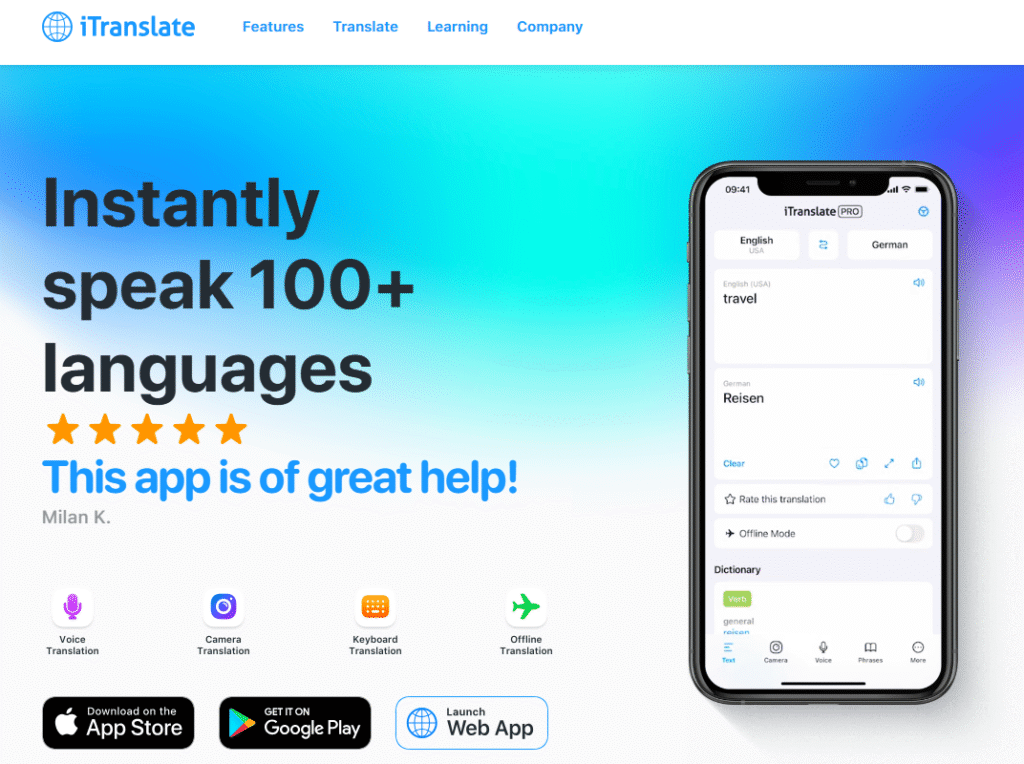
iTranslate has earned its reputation as the go-to translation app for travelers and mobile users. Supporting over 100 languages, this versatile solution combines an elegant interface with practical features designed for real-world communication.
The app truly shines with its travel-focused capabilities, including voice translation for spoken conversations and camera translation for instantly deciphering menus, signs, and documents. Its bilingual conversation mode creates a seamless back-and-forth experience, making international conversations flow naturally.
Pros
- Comprehensive travel-oriented features including voice and camera translation
- Downloadable offline translation packs for popular languages
- Smooth bilingual conversation mode for real-time dialogue
- Support for regional dialects and language variations
Cons
- Many advanced features require a paid subscription
- Mobile-first design sometimes sacrifices accuracy compared to desktop-focused translation tools
3. Smartling
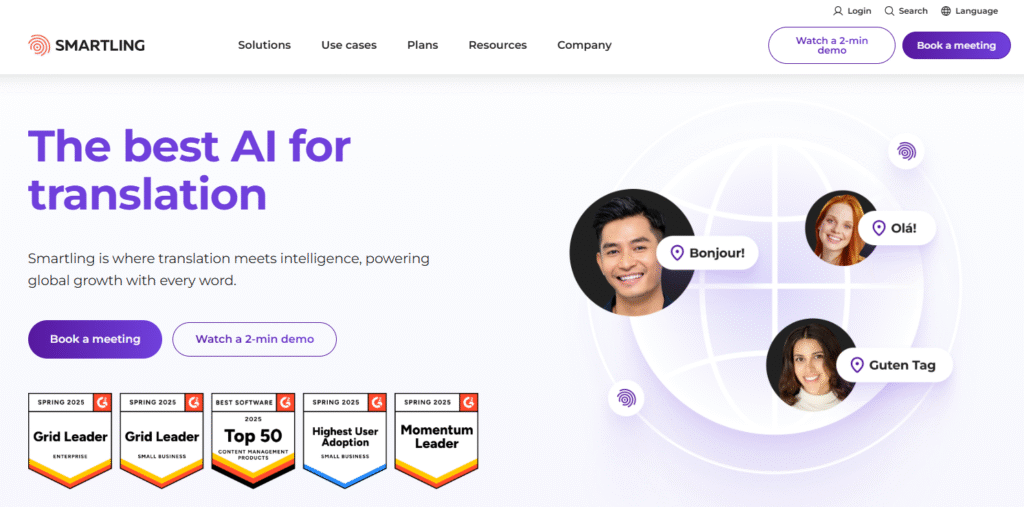
Smartling operates in a different league altogether, functioning as a sophisticated cloud-based Translation Management System rather than a simple translation app. Designed for businesses with serious global ambitions, Smartling automates the complex process of localizing content across multiple platforms.
Based in New York City, this powerful platform combines AI efficiency with human expertise, making it the preferred solution for companies looking to maintain consistent brand voice and terminology across international markets while streamlining their translation workflows.
Pros
- Seamless integration with Content Management Systems and business tools
- Comprehensive features for content upload, project tracking, and translation management
- Scalable solution supporting over 150 languages for enterprise needs
- Professional interface designed for translation workflow efficiency
Cons
- Steeper learning curve for new users mastering advanced features
- Some users report occasional billing complexities
- Premium pricing may not justify the value for smaller businesses
4. Wordly.ai
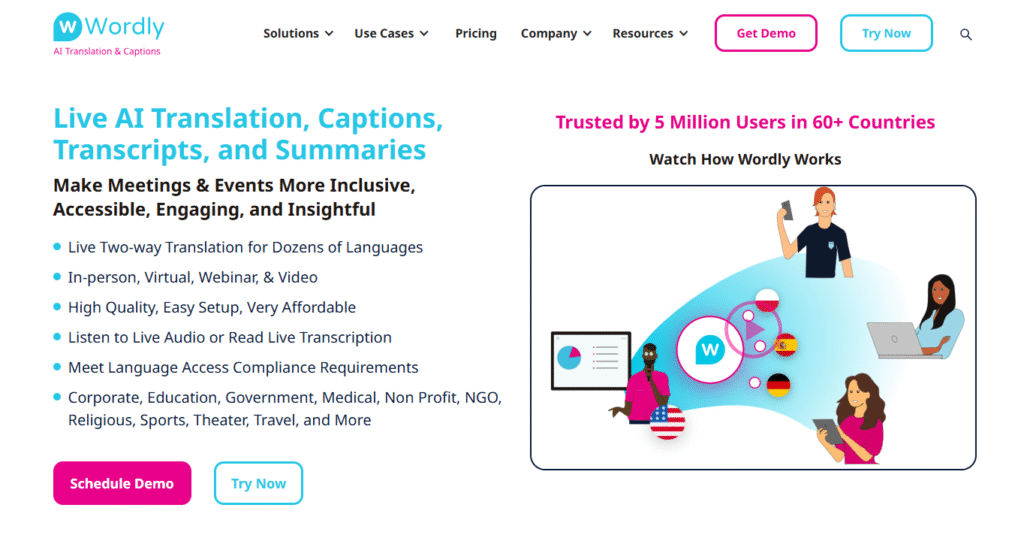
Wordly.ai carves out a unique niche by focusing exclusively on live communication rather than text translation. This innovative AI solution provides real-time translations and captions for meetings, conferences, and events, making it the ultimate tool for multilingual gatherings.
Supporting over 25 languages, Wordly.ai instantly transforms any meeting into an inclusive, borderless experience where participants can engage in their preferred language. It’s particularly valuable for organizations that regularly host international speakers or have diverse multilingual teams.
Pros
- Specialized focus on live events and real-time simultaneous translation
- Cost-effective alternative to hiring human interpreters
- Rapid implementation that works within minutes
- Impressive accuracy for spoken dialogue in meeting contexts
Cons
- Lacks proofreading features essential for published materials
- Occasional contextual errors with technical terminology or poor audio quality
5. DeepL
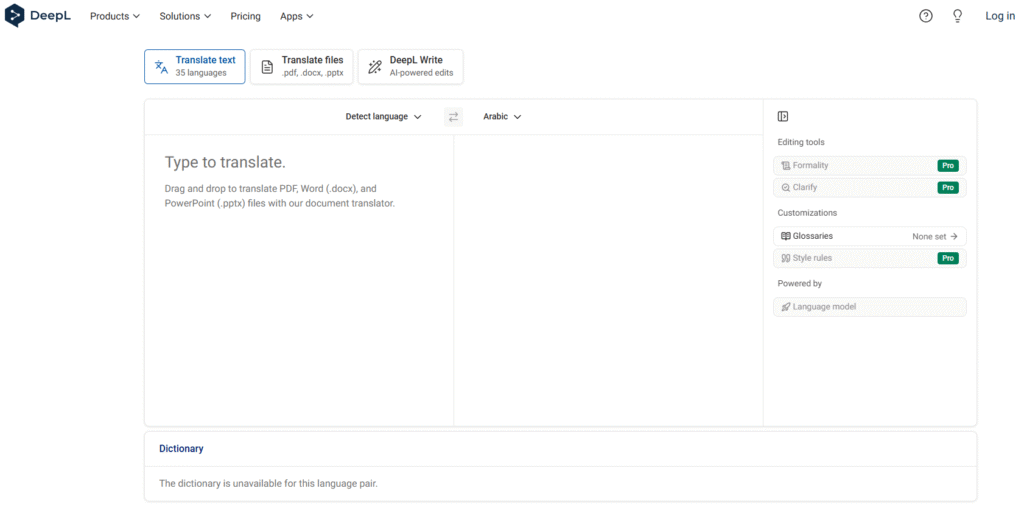
DeepL has emerged as the quality leader in the translation space, frequently praised for producing the most natural-sounding and fluent translations available. This German-based service has developed a cult following among translators, writers, and professionals who prioritize linguistic quality above all else.
DeepL’s secret sauce lies in its sophisticated approach to context and nuance, intelligently capturing idiomatic expressions and stylistic subtleties that often escape other translation tools. If you need translations that read like they were written by a human native speaker, DeepL is your best bet.
Pros
- Industry-leading accuracy for natural and human-like translations
- Generous free plan with robust features for everyday use
- Multiple access points including API, web tool, and browser plugins
- Excellent formatting preservation for uploaded documents
Cons
- Limited integrations with popular business platforms
- No options for custom style guides or brand voice definitions
- Lacks Translation Memory feature for large, repetitive projects
6. Copy.ai
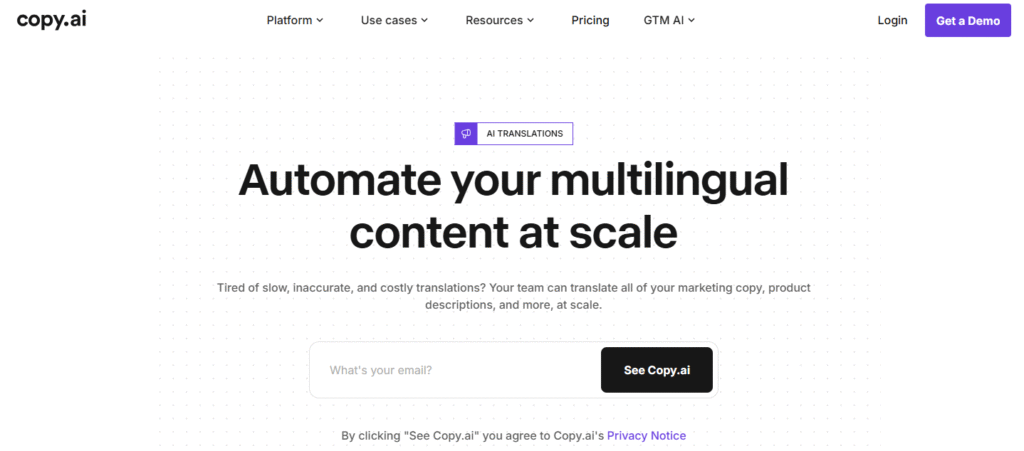
Copy.ai primarily functions as a versatile generative AI platform, but its translation and localization capabilities make it a valuable tool for businesses creating multilingual content. Leveraging advanced Large Language Models, this platform excels at generating compelling marketing copy, product descriptions, and business communications across languages.
What sets Copy.ai apart is its ability to maintain brand voice and stylistic consistency while translating, making it ideal for companies that need to localize their marketing materials and customer communications without losing their unique tone.
Pros
- All-in-one platform combining translation with content creation
- Strong brand alignment maintaining specific tone and style
- User-friendly interface with quick content generation
- Multiple templates for different content types and contexts
Cons
- Occasional “hallucinations” or factual inaccuracies in generated content
- Translation accuracy may slightly trail dedicated translation tools
- Primary focus on generation rather than pure translation
Conclusion on Best AI Translator Apps
As we’ve journeyed through the diverse landscape of AI translation tools, one thing becomes abundantly clear: we’re living in a golden age of language technology.
The best AI translator app for you ultimately depends on your specific needs and use cases. Are you a frequent traveler who needs quick, reliable translations on the go? iTranslate might be your perfect companion. Do you prioritize flawless, natural-sounding translations above all else? DeepL should be at the top of your list. Are you managing business localization across multiple markets? Smartling offers the enterprise-grade solution you need.
The remarkable progress in AI translation technology means that language barriers are becoming increasingly surmountable. These tools aren’t just convenient accessories – they’re powerful enablers that can transform how we work, travel, and connect across cultures. The perfect AI translation partner is out there waiting to help you unlock your global potential. Why not take one for a test drive and experience the freedom of seamless cross-language communication for yourself?
- 7 Best AI Apps for Android in 2025: Transform Your Phone Into a Genius
- 7 Best AI Avatar Generators in 2025: Essential Guide to Lifelike Digital Personas
- 7 Best AI Voice Cloning Software: Create Realistic Voices in Minutes
- 6 Best AI Voice Recorders of 2025: Revolutionize Your Audio Experience
- 6 Best AI Translator Apps for Global Communication in 2025
- 6 Best AI Personal Assistants in 2025: Finding Your Digital Co-Pilot
- 7 Best AI Companion Apps in 2025: Your Digital Confidante Awaits
- 6 Best AI Poster Design Tools for Stunning Visuals in 2025
- 6 Best AI Math Solvers: Your Ultimate Guide to Smarter Learning in 2025
- 7 Best AI Video Enhancers to Transform Your Footprint in 2025
- 7 Best AI Trip Planners: Ditch the Spreadsheets and Automate Your Adventures